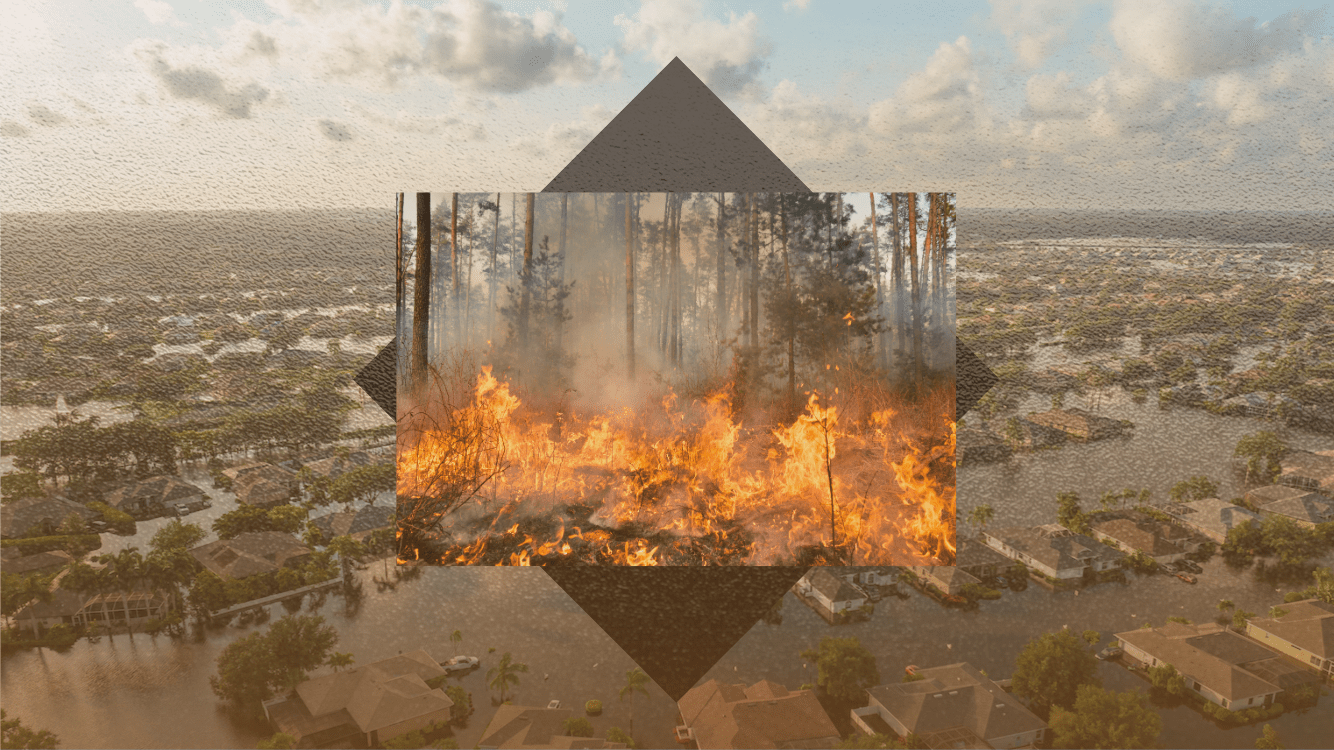Survey: Are Americans Willing to Buy Real Estate in High-Risk Natural Disaster Zones?

Many Floridians are considering raising their homes above hurricane storm surge. In Los Angeles, some residents burned by fires are looking to move to safer spots in New England. In both cases, homeowners are grappling with how to survive and thrive in areas prone to natural disasters like fires, floods, and earthquakes — and when to call it quits.
After some residents throw in the towel, homes might become more available in danger zones, or even vulnerable regions, at prices that tempt newcomers to overlook the risks.
But is there any price that would make the gamble worth it?
A new survey from moveBuddha.com, a leading moving company booking website, exploring consumer attitudes towards purchasing affordable real estate in regions at high risk for natural disasters, has unveiled a largely cautious outlook from U.S. residents.
The findings suggest that while a small portion of the population is open to the idea, the majority remains hesitant due to the inherent risks involved.
Key Takeaways
- 4.83% of respondents indicated they are very likely to buy property in high-risk disaster zones, while 11.35% are somewhat likely.
- 22.10% of respondents were unsure, leaving a notable portion of the population uncertain about the potential risks.
- On the flip side, 31.21% expressed they are unlikely to consider purchasing property, and 30.51% said they are not at all likely to invest in such areas.
Over 16% ‘Somewhat’ or Very Likely’ to Consider Risk Zones
It may be the call of the beach or the siren call of temperate climates, but just under 5% of respondents are very likely, and another 11.35% somewhat likely, to buy in high-risk areas.
That could be because many Americans are already living in high-risk areas. According to FEMA’s Natural Hazard Risk Index Map, America’s top 5 most populous metro areas are all at “relatively high” or “very high” risk of natural disasters. Be it Chicago’s high likelihood of hot and cold spells, strong wind and tornadoes, or Houston’s propensity for hurricanes, flooding, and lightning, Americans have already moved to high-risk zones.
Perhaps that’s why 8.41% of Southern respondents say they’re very likely to move to such an area (131.68% more likely than the next most likely group — Midwesterners). That gels with 2025’s most popular move destinations, like South Carolina, with elevated-risk coastal cities like Myrtle Beach leading the way.
When asked specifically about high-risk moves, however, Americans show more hesitation.
Over 22% are unsure about whether they’d make the move to capitalize on affordable real estate. And 31.21% are unlikely to make such a move, while 30.51% say they’d never consider a high-risk region for affordable housing. That’s 61.72% of respondents saying such a move would be unlikely or a no-go for them, a towering 117% higher than those who would consider such a move.
For now, the vast majority of Americans say they’re not interested in areas with high natural disasters, even if it means facing higher real estate prices.
Westerners Least Likely to Accept Risk
When broken down by region, varying levels of comfort with purchasing real estate in high-risk zones were evident:
- Midwest: Only 3.63% of respondents from the Midwest were very likely to purchase property in high-risk zones. 34.52% were unlikely, and 30.64% were not at all likely to consider it.
- Northeast: In the Northeast, 3.05% of respondents expressed they were very likely to make a purchase, while 35.93% said they were not at all likely, and 30.38% were unlikely.
- South: The South showed slightly more openness to purchasing in high-risk areas. 8.41% were very likely to buy, but 26.07% indicated they were not at all likely, with 30.31% being unlikely.
- West: The West region demonstrated the most caution, with 32.33% of respondents answering that they were not at all likely to buy property in high-risk zones, and only 2.12% expressing very likely interest.
Perhaps scarred by winds, quakes, droughts, and fires, Westerners are least likely to say they’re “very likely” to purchase in a high-risk zone in exchange for affordable prices. But the effect isn’t having the same impact on Southerners, who are, by far, most likely to embrace risk zones when the price is right.
On the flip side, Northeasterners are most likely to say such a move is “not at all likely” for them, perhaps because they’re already feeling safe in their current region. Again, southerners buck the trend, with the lowest percentage (26% of residents) saying that such a move isn’t at all likely.
Risks Outweigh Affordability Most Often
The survey highlights a significant wariness about purchasing real estate in high-risk natural disaster zones, with 62.72% of all respondents either unlikely or not at all likely to invest in such areas. Regional differences in risk tolerance were apparent, with the South showing the most openness to these types of investments.
Even so, more than half of Southerners, and nearly 65% of Midwesterners and Northeasterners, say the risks make such moves unlikely.
So while affordability in real estate remains a real issue for Americans trying to buy homes, few are willing to make risky compromises to make it happen by moving to regions in the path of potential natural disasters.
Put simply, you still can’t put a price tag on Americans’ peace of mind.
Methodology
In October 2024, we asked 1,250 diverse Americans via Pollfish, “Would you buy affordable real estate in a high-risk zone for natural disasters?” among other questions about their motivations for moving in 2025. We allowed for 5 responses:
- Very likely
- Somewhat likely
- Not sure
- Unlikely
- Not at all likely
Finally, we tabulated responses as a whole and regionally to find distinctions.
Not what you were looking for?
Check out other categories that can help you find the information you need!

